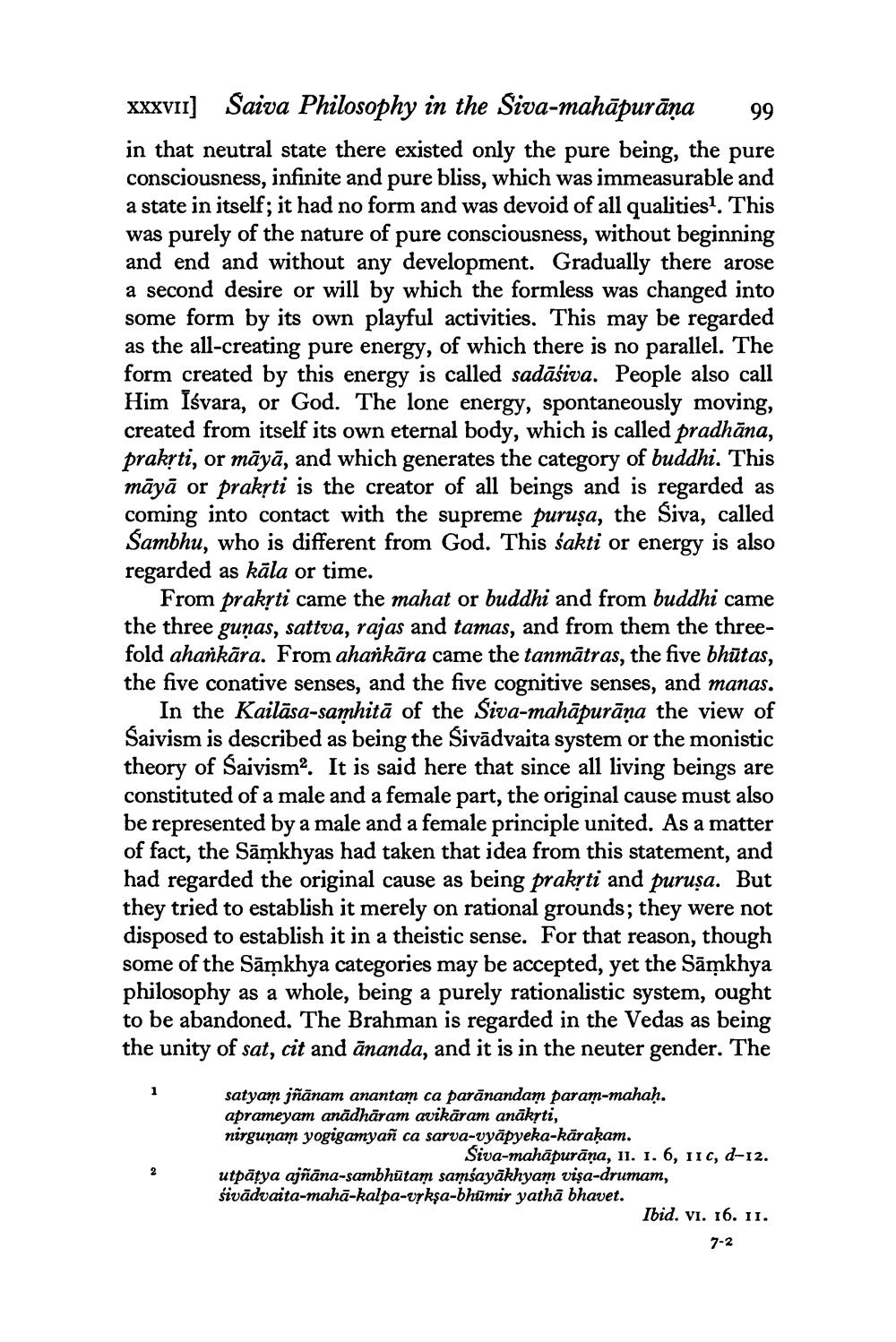________________
XXXVII] Saiva Philosophy in the Siva-mahāpurāņa 99 in that neutral state there existed only the pure being, the pure consciousness, infinite and pure bliss, which was immeasurable and a state in itself; it had no form and was devoid of all qualities. This was purely of the nature of pure consciousness, without beginning and end and without any development. Gradually there arose a second desire or will by which the formless was changed into some form by its own playful activities. This may be regarded as the all-creating pure energy, of which there is no parallel. The form created by this energy is called sadāśiva. People also call Him Iśvara, or God. The lone energy, spontaneously moving, created from itself its own eternal body, which is called pradhāna, prakrti, or māyā, and which generates the category of buddhi. This māyā or prakyti is the creator of all beings and is regarded as coming into contact with the supreme puruşa, the Siva, called Sambhu, who is different from God. This sakti or energy is also regarded as kāla or time.
From prakrti came the mahat or buddhi and from buddhi came the three guņas, sattva, rajas and tamas, and from them the threefold ahankāra. From ahankāra came the tanmātras, the five bhūtas, the five conative senses, and the five cognitive senses, and manas.
In the Kailāsa-samhitā of the Siva-mahāpurāna the view of Saivism is described as being the Sivādvaita system or the monistic theory of Saivism. It is said here that since all living beings are constituted of a male and a female part, the original cause must also be represented by a male and a female principle united. As a matter of fact, the Sāmkhyas had taken that idea from this statement, and had regarded the original cause as being prakrti and puruşa. But they tried to establish it merely on rational grounds; they were not disposed to establish it in a theistic sense. For that reason, though some of the Sāmkhya categories may be accepted, yet the Sāmkhya philosophy as a whole, being a purely rationalistic system, ought to be abandoned. The Brahman is regarded in the Vedas as being the unity of sat, cit and ananda, and it is in the neuter gender. The
satyam jñānam anantam ca parānandam param-mahaḥ. aprameyam anādhāram avikāram anākrti, nirgunam yogigamyañ ca sarva-vyāpyeka-kārakam.
Siva-mahāpurāņa, 11. 1. 6, IIC, d-12. utpatya ajñāna-sambhūtam samśayākhyam visa-drumam, śivādvaita-mahā-kalpa-vrkşa-bhūmir yathā bhavet.
Ibid. vi. 16. II.
7-2




